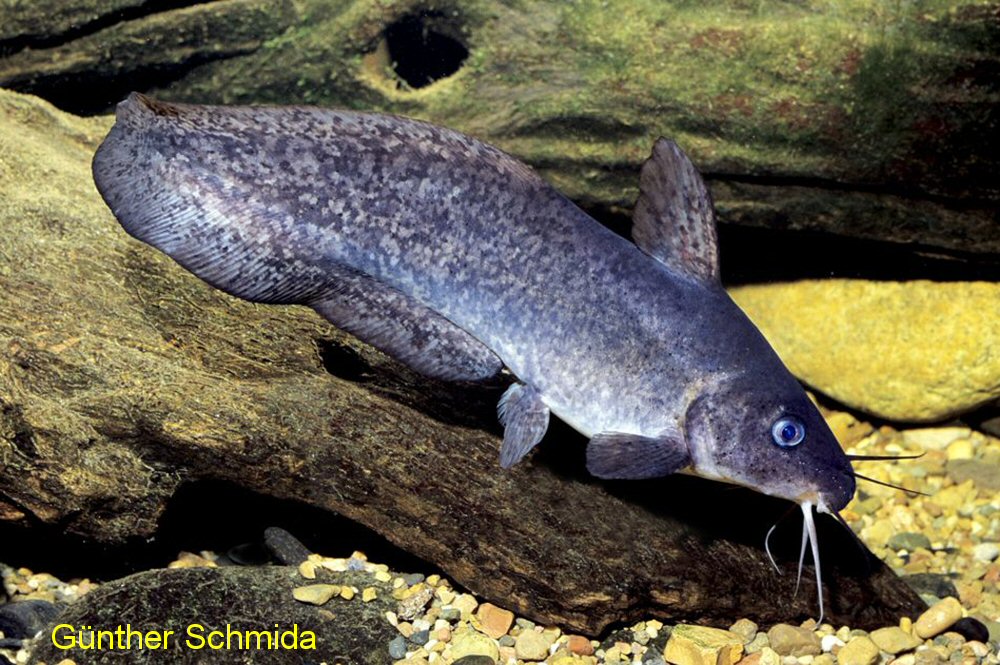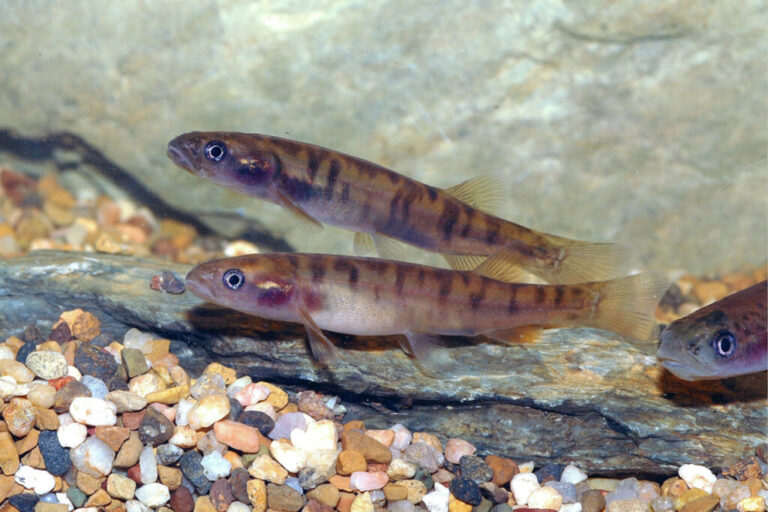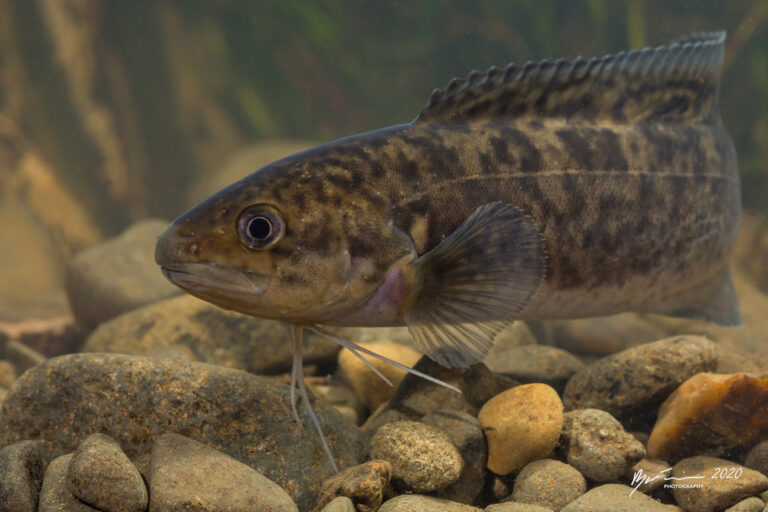The eel-tailed catfish, Tandanus tandanus, is a freshwater fish native to the Murray-Darling river system of eastern Australia. The scientific name for eel-tailed catfish comes from a name for the fish in an unidentified Aboriginal Australian language – Tandan, which Major Thomas Livingston Mitchell recorded on his 1832 expedition. It is also known as dewfish, freshwater catfish, jewfish, and tandan. The name Dewfish was given when there was an unsuccessful attempt to start an aquaculture industry around this species in the late 1980s.
Eel-tailed catfish have a large head with thick and fleshy lips and tubular nostrils. The skin is tough and smooth. Body colouration in adults vary from olive-green to brown, black or purplish on their backs and white on the underside.
A down-turned mouth with fleshy lips surrounded by a number of barbels assist them with feeding. They are a solid, almost cylindrical, elongate fish, with the posterior half of their body tapering into a pointed eel-like tail. A continuous fin margin surrounds this tapering posterior half of the body. Their eyes are small.
The eel-tail catfish has 4 pairs of barbels surrounding the mouth, and
sharp serrated dorsal- and pectoral-fin spines which are venomous and can cause a very painful wound.
Catfish are relatively inactive and do not migrate for spawning but build a nest in areas of still water to breed. Eel-tailed catfish commonly grow to about 50 centimetres and weigh about 1.8 kilograms but can attain 90.0 cm and weigh up to 6kg.
Freshwater Catfish were formerly very abundant across most of the Murray-Darling Basin in inland NSW. Prior to the 1980s, they provided recreational fishing opportunities and they are still considered one of the premier table fish by many country people. Catfish have virtually disappeared from the Murray, Murrumbidgee and Lachlan catchments but are still relatively common in parts of the Macquarie, Namoi, Gwydir and Border River catchments and coastal catchments North of Newcastle. The eel-tailed catfish inhabits slow moving streams, lakes and ponds with fringing vegetation. It swims close to the sand or gravel bottoms. This species is more abundant in lakes than in flowing water.
Juvenile eel-tailed catfish feed on zooplankton, and small insects, particularly chironomid larvae. Fish over about 100mm also eat small fish while adults include shrimps, crayfish in the warmer months and midge larvae in winter. In addition, they eat molluscs and dragonfly, caddis and mayfly larvae.
A 6 weight rod is more than adequate for this species whilst their diet means that many flies commonly used for trout are suitable for pursuing catfish.




